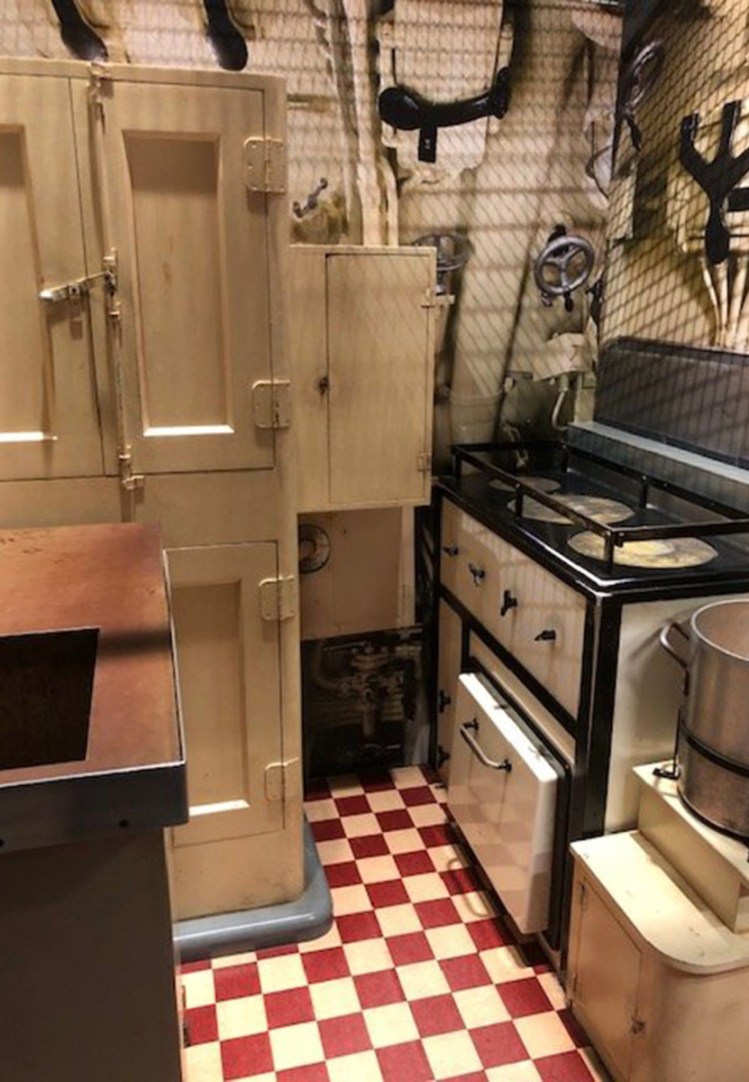I don’t want to hear someone complaining about how small their kitchen is ever again.
A recent trip to Chicago included a visit to the Museum of Science and Industry to explore, among other wonders, the captured German WWII submarine U-505. I hadn’t been to see it since, um, a very long time ago.
Of all the fascinating details of the tour, one that I found among the most fascinating was what the tour guide called the kitchen, but would ordinarily be referred to as the galley.
There were 59 men aboard that submarine – 59 men who the guide made abundantly clear were dirty, sweaty, grimy and, frankly, smelly. They were also hungry.
The galley was crammed between a couple of small sleeping quarters for the sailors. Its dimensions, and I am here speaking with both the precision and vocabulary of a marine engineer, were very tiny-by-not enough room.
One person could stand comfortably in it. Two could not. The amount of floor space is literally less than the size of a modern fancy residential range.
For that matter, the sub’s cooking surface was also smaller than a modern fancy residential range – or even one that is not all that fancy.
The ship’s stove had just two hot plates for large pots and one for a small pot, and there was an additional tabletop hot plate that could also handle a large pot.
The oven was about the size of a large toaster oven today.
And that was it. That was all the room in which they had to cook. The sink, which one assumes was used to wash the dishes and pots, was commensurately undersized.
And there were 59 hungry mouths to feed three meals a day for weeks at a time before they put back into port. They had to bring as much food as they possibly could with them, and find places to store it all on a ship in which every square inch of space was being used for something.
The sailors shared bunks in shifts, with some of the men sleeping among the torpedoes. Not only did they have to find room for 12 tons of food, they had to distribute it evenly throughout the ship to keep it in balance when it dove underwater.
Whatever fresh they could bring on board was consumed first, for obvious reasons. The fresh foods included 494 pounds of fresh and cooked meats, 238 pounds of sausages (remember, it was a German sub), 595 pounds of eggs, 917 pounds of lemons (presumably to keep the crew free from scurvy), 2,365 pounds of other fruit and 3,858 pounds of potatoes.
When those and some other fresh items were depleted, they turned to preserved and canned meats (4,808 pounds), powdered milk (1,728 pounds) and dried potatoes (397 pounds).
And then there were the 2,058 pounds of preserved breads. Those were breads that were kept in cans. Canned bread. The museum even has the remains of a loaf of canned bread that was discovered hidden in the sub in 1995 – more than 50 years after it was captured.
The loaf looked horrible and gross. Yet, somehow you kind of assume it hadn’t changed significantly since it was first put into the can.
The men aboard the U-505 were responsible for the sinking of eight Allied cargo ships during the course of the war, including three from the United States. And yet, when you take the tour, what you feel for them is not revulsion but rather sympathy.
It was a hard, unpleasant life on board a submarine. Conditions were cramped, there was no water with which to bathe and the nightmarish experience of being hunted with depth charges was literally unnerving (one commander, while the ship was being attacked with depth charges, cracked under the strain and committed suicide in front of his crew, part of the ship’s story that is not mentioned in the tour).
Life was bad enough without having to eat canned bread.
Send questions/comments to the editors.



Success. Please wait for the page to reload. If the page does not reload within 5 seconds, please refresh the page.
Enter your email and password to access comments.
Hi, to comment on stories you must . This profile is in addition to your subscription and website login.
Already have a commenting profile? .
Invalid username/password.
Please check your email to confirm and complete your registration.
Only subscribers are eligible to post comments. Please subscribe or login first for digital access. Here’s why.
Use the form below to reset your password. When you've submitted your account email, we will send an email with a reset code.